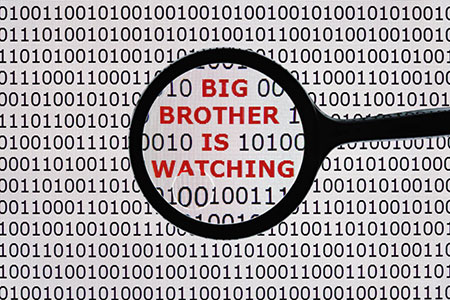|
June 18, 2014 from OccupyCorporatism Website
The High Court in Ireland (HCI) requested the European Court of Justice (ECJ) review the Safe Harbor Treaty (SHT) between the European Union (EU) and the U.S. to protect private user data while Facebook was caught sharing digital communications from EU citizens with the National Security Agency (NSA).
HCI Justice Gerard Hogan ruled that,
Mark Schrems, post-graduate law student brought and member of the group Europe v. Facebook (EVF) which claims in court documents that Bill Hawkes, commissioner for data protection for the Irish government,
Schrems showed that this data exchange from Facebook to the NSA was in compliance with the SHT, according to Hawkes.
EVF concludes that,
The, "main development of the legal perspective" for protecting data is outlined in the Article 8 of the Charter of Fundamental Rights (CFR) of the EU.
However Schrems states that Hawkes "did not adhere to the requirements" of the law and behaved with "scrupulous steadfastness" as far back as 1995.
In 2013, Viviane Reding, commissioner of the ECJ said the NSA spying is a,
Since 1998, the SHT has prohibited,
The NSA PRISM program is under fire in this case brought before the HCI.
Under program PRISM (which extends as far back as 2007), the federal government has been data mining from tech corporations such as, PRISM was created during the George W. Bush presidential administration and has expanded further by President Obama.
The Protect America Act of 2007 gave private corporations immunity.
PRISM collaborated with Microsoft first and conducted surveillance operations under the guise of searching for terrorist activity or cyber espionage.
The Federal Bureau of Investigations (FBI) and the NSA have been acquiring,
In the U.S., the NSA is empowered by the 2001 U.S. Patriot Act, Sec. 215 (50 U.S.C. § 1861), that states the federal government can collect data on Americans if there is a claim of national security compromise.
Metadata was siphoned under this clause for nearly a decade (that we know of).
That innocuous metadata that the NSA has been collecting includes trunk identifiers which are used to gather the metadata.
In fact, when hacking into a call, a trunk identifier can be used to not only gather information about the call, but to listen in on the conversation from both the caller and receiver.
Trunking is the way that the police can change their signal when on the radio every few seconds so that it cannot be siphoned by hackers. It is used by cell phone towers to encrypt the signal for a secure line.
Trunking follows the sender and receiver when they change channels so that GPS-like surveillance is conducted.
This allows the surveillance apparatus to have a continues stream regardless of when the channel changes every few seconds, which in turn allow those listening in to have a steady signal without breaks.
Effectively, they can listen to the entire conversation and follow the signal as it changes.
|

